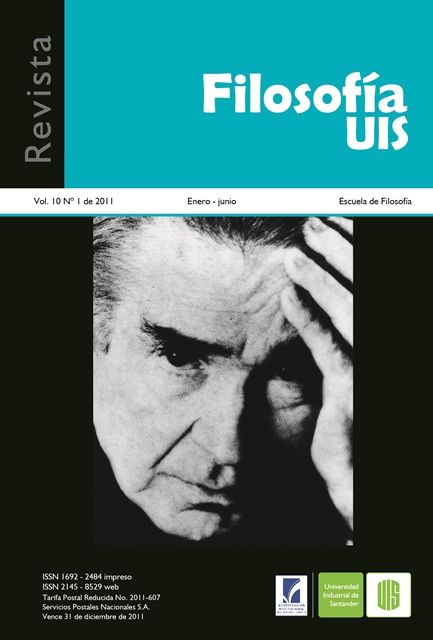Published 2011-07-15
Keywords
- Merleau-Ponty,
- world body,
- body,
- experience of the other,
- perception
How to Cite
Copyright (c) 2011 Juan Manuel Cuartas Restrepo

This work is licensed under a Creative Commons Attribution 4.0 International License.
Abstract
The work of Maurice Merleau-Ponty can be characterized as the work of a philosopher who is constantly asking himself about the perception and the embodiment of being in the world. It is very hard to describe to what extent the loss of perception makes it difficult to relate to the world. But it is true that nobody is ruled out, and that resilience is a strength that allows continued activity. An approach to things and preserves a positive version of one’s self. This essay investigates, following Merleau-Ponty, the reason within to throw oneself to the other and to the world.
Downloads
References
- Bonan, Ronald (2001). Le problème de l’intersubjectivité dans la philosophie de Merleau-Ponty. La dimension commune, volume 1, Paris: L’Harmattan.
- Dastur, Françoise (2001). Chair et langage: essais sur Merleau-Ponty, La Versanne: Encre Marine.
- Merleau-Ponty, Maurice (1955). Les aventures de la dialectique, Paris: Éditions Gallimard.
- Merleau-Ponty, Maurice (1960). Signes, Paris: Éditions Gallimard.
- Merleau-Ponty, Maurice (1961). «L’œil et l’esprit», En: Les Temps Modernes, 17° Année, N° 184-185.
- Merleau-Ponty, Maurice (1964). Le Visible et l’Invisible, seguido de Notes de travail. Texto establecido por Claude Lefort, acompañado de una introducción y de un posfasio, Paris: Éditions Gallimard.
- Ricœur, Paul (1990). Soi-même comme un autre, Paris: Éditions du Seuil.
